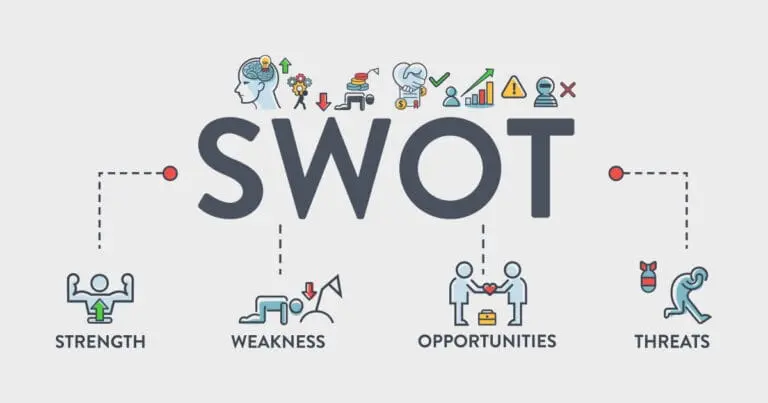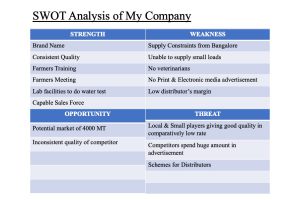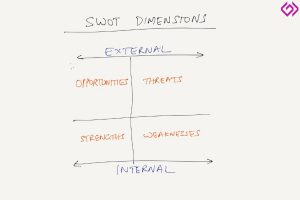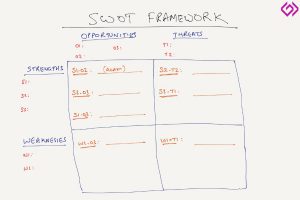The Strengths and Weaknesses of the Misused SWOT Framework

There must not be any manager or an MBA student who has not used the SWOT Framework in a presentation. You can place side bets on how many minutes or slides will it take for the SWOT to show up. It’s such a sweet framework, apparently very easy to use, and of course, universal.
Yet, the SWOT framework is misused at best. The primary dimensions are not fully understood and the outcomes are not thought through. In this post, I want to share how the SWOT framework must be used. (Note: earlier, I wrote about the popular Porter framework that is misused).
The SWOT
For the uninitiated, SWOT stands for Strengths, Weaknesses, Opportunities & Threats. It is usually represented through a 2×2 matrix with S,W,O and T making up the four quadrants. An actual sample is provided below.

The Dimensions
The SWOT works on two dimensions. First, the external view which refers to the Opportunities and Threats. This is the outside-in view of a business about the environment, market, and competitive factors. Then, we have the internal view which is the Strengths and Weaknesses. This is an assessment of the relative capabilities of the business or organisation.

As you can imagine, these are not to be treated as independent dimensions. Our internal abilities must be evaluated in the context of the external environment. Similarly, we look at the external factors that are relevant to the business and capabilities, in question.
Therefore, the SWOT is not a matrix of four quadrants. Placing the information in the four quadrants is just the first step of documenting the external and internal aspects.
In fact, it is the intersection of the two dimensions that provides us value.
SWOT Intersections
Let us lay out the external on the x-axis and the internal on the y-axis. Also, from an analytical perspective, let us number each of the items we have in the boxes (e.g. S1, S2… W1, W2…, O1, O2,… T1, T2…). Ideally, each box should have 3 and at most, 5 to keep the analysis focused.
Now, we have four intersections to consider. We re-draw the matrix in this manner.

Strengths-Opportunities: What are our strengths that we can use to leverage the opportunities in the market? Maybe S1 helps us with O2. So we write down S1-O2 in the intersection. What other such combos do we have?
Strengths-Threats: Which strengths can we use to counter the market threats? Identify the intersections.
Weaknesses-Opportunities: What opportunities are we likely to miss out due to our weaknesses? Which weakness must we work on, to ensure that we don’t miss a particular opportunity? You might find that W2-O3 is appropriate to note down.
Weaknesses-Threats: Which threats are reinforced by our weaknesses? Is any mitigation possible? What should we be prepared for?
Action Orientation
Now that we have identified all the intersections, we can ideate on the actions required for each of them. The SWOT framework is not just to list out a set of disconnected items under the four categories. It must lead to actions.
By considering both external and internal factors, we can build a powerful set of ideas that help the firm deal with the market opportunities and threats.
So, the next time you feel like using the SWOT, remember its action orientation. Use it wisely.





